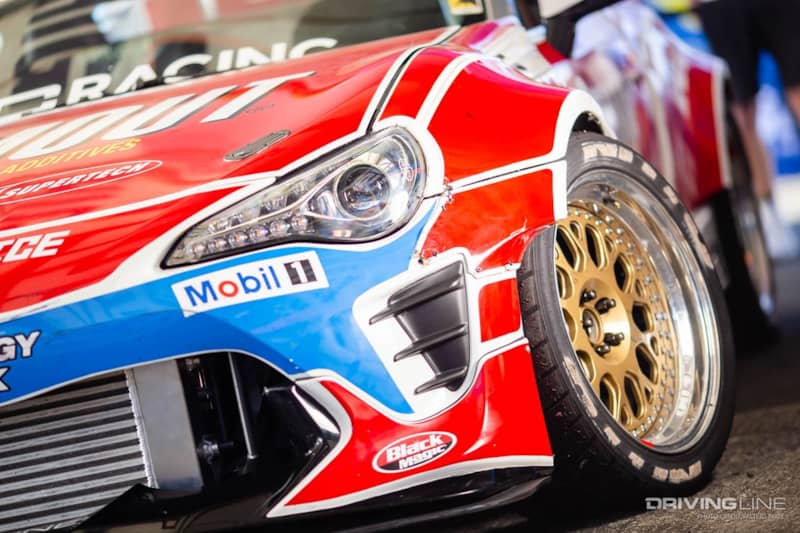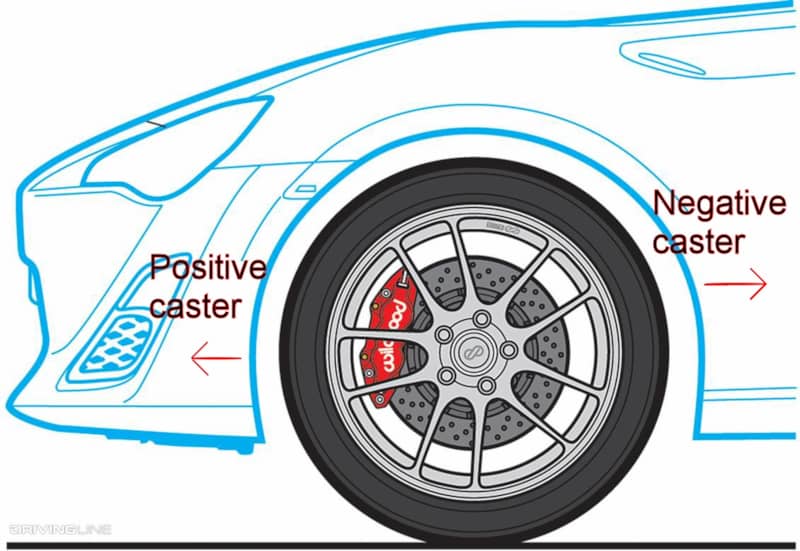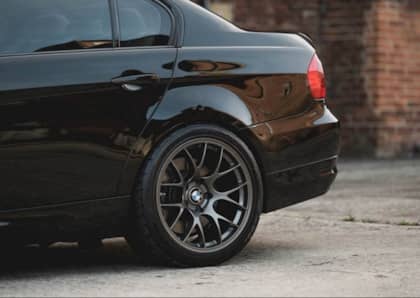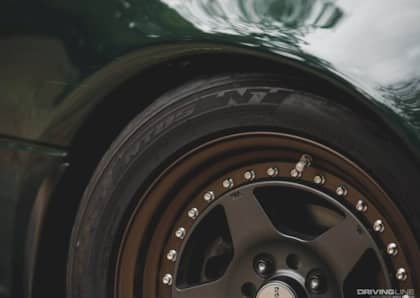Wheel Alignment Basics for High Performance Driving: Three Important Adjustments You Can Do Yourself
It might surprise you to learn that one of the biggest changes you can make to the way your vehicle handles often doesn't require installing any new parts at all. The alignment of your car's wheels plays a major role in how it performs both on the street and on the track, but it's an area that is often overlooked by anyone first getting started in motorsports, be it autocross, lapping, or time trials.
Interested in moving beyond the stock suspension settings that came with your car so you can unlock much more of its performance potential? Let's take a look at some alignment basics so you can get started.
Compromise, Compromise, Compromise
From the factory, your vehicle's alignment is setup so as to balance tire wear, straight-line stability, dealing with crowned roads (which slope to one side for drainage purposes), and handling. As might be expected, when your dealing with that many requirements, compromises have to be made, with most factory alignments—and the specs used by your local, standard alignment shop—erring on the side of tread life and centering a vehicle in its lane on public roads.

From a performance perspective alignment requirements are quite different. The goal is to maximize each tire's contact patch and improve the vehicle's willingness to turn in to a corner, regardless of how much deflection is present in the suspension. Things like tire wear and straight line stability are far less important.
There are several key adjustments you can make to your alignment that will help you keep as much tire stuck to the asphalt as possible, while simultaneously improving the willingness of your vehicle to change direction.
Start With Camber
Camber is a term that's often used in the automotive community, especially in a world that now includes the #stancenation with its exaggerated, almost perpendicular wheel angles. Camber is divided into two settings:
• Positive camber. Looking down from the top of a tire, positive camber angle leans the top of the wheel away from the vehicle.
• Negative camber. The reverse of the above, with the tire leaning away from the vehicle at the bottom of the wheel.

Negative camber is useful in performance driving, as the angle of the wheel places a larger percentage of the tire tread in contact with the pavement when turning forces are working on it. This comes at the expensive of additional wear on the inner tread of the tire in normal driving, as it bears more of a load. Too much negative camber, and you'll sacrifice straight-line braking and stability, as well as acceleration (when altering rear alignment).
The degree of camber adjustment available in your stock suspension may not be more than a degree or two, but this can often be improved by installing camber plates that allow for greater adjustability. Keep in mind that you'll have to make sure that changing the camber angle allows your wheel and tire setup to clear your suspension components and body work.
Caster Is Next
The position of the wheels in relation to their mounting point is called caster, and in an automobile this term specifically refers to the position of the top of you car's strut mount (or upper ball joint) to the lower ball joint—again, as seen from the top down. Positive caster is when this angle slopes backwards towards the vehicle—with the wheel 'pushed' forward—while negative caster reverse that angle, 'pushing' the wheel backwards in the wheel well.
Why is caster important? A car running positive caster amplifies the amount of suspension camber when the wheel is turned, further improving cornering ability. Of course there are limits (usually between six and eight degrees of positive caster), before it starts to have a negative effect on the contact patch.

Positive caster can also allow you to dial-in more modest levels of negative camber but still achieve the handling capability you are looking for, especially if you'll be driving on the street as well as the track. Further, adding positive caster usually results in more willingness for a car's steering to return to center, as well as increased steering feel, and better high speed stability.
As with camber, your vehicle may only offer small amounts of adjustment. If you are driving a front-wheel drive or all-wheel drive car, there may be no stock caster adjustment available at all, which can be mitigated by the installation of adjustment tension rods or arms, offset caster bushings, or offset top mounts.
Toe Time
The final piece of the performance alignment puzzle is toe angle. To visualize toe, it's as simple as imagining each of your vehicle's wheels like the toes on your feet, seen from above. If the wheels are angled inwards, towards the center of the car, that is called toe-in. If they are angled outwards, it's toe-out.
When tires are pointing toe-in at the front of the car, it offers increased straight-line stability but at the expense of being able to turn the wheels. Toe-out has the opposite effect, making a car more willing to change direction because the wheel on the inside of the corner is already pointing towards where you're turning. This is true for both front and rear wheels.

Toe-out is something to be experimented with in moderation. Too much, and your steering will feel darty as the car attempts to pull you from one side to the other if you even suggest that you're about to turn in to a corner. It can also increase wear on the tires, especially at the rear due to suspension drag.
Toe angle is far more sensitive than that of camber or caster, and you'll see it expressed not just in degrees, but also in fractions of an inch. You'll only ever make small, incremental adjustments to your vehicle's toe, and you'll want to keep things as balanced as possible to find the sweet spot between aggressive turn-in and stable braking and acceleration.
Now that you've added a performance alignment to your car, it's time to tackle your braking system. Click here for guidance on adding stopping power.











